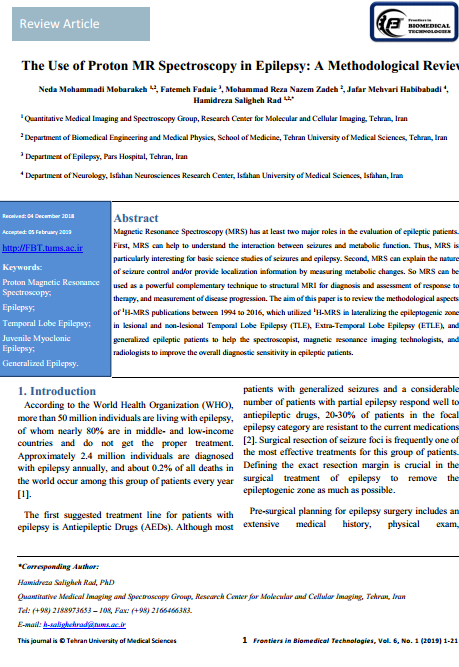The Use of Proton MR Spectroscopy in Epilepsy: A Methodological Review
Abstract
Magnetic Resonance Spectroscopy (MRS) has at least two major roles in the evaluation of epileptic patients.
First, MRS can help to understand the interaction between seizures and metabolic function. Thus, MRS is particularly interesting for basic science studies of seizures and epilepsy. Second, MRS can explain the nature of seizure control and/or provide localization information by measuring metabolic changes. So MRS can be used as a powerful complementary technique to structural MRI for diagnosis and assessment of response to therapy, and measurement of disease progression. The aim of this paper is to review the methodological aspects of 1H-MRS journal journal-publications between 1994 to 2016, which utilized 1H-MRS in lateralizing the epileptogenic zone in lesional and non-lesional Temporal Lobe Epilepsy (TLE), Extra-Temporal Lobe Epilepsy (ETLE), and generalized epileptic patients to help the spectroscopist, magnetic resonance imaging technologists, and radiologists to improve the overall diagnostic sensitivity in epileptic patients.

